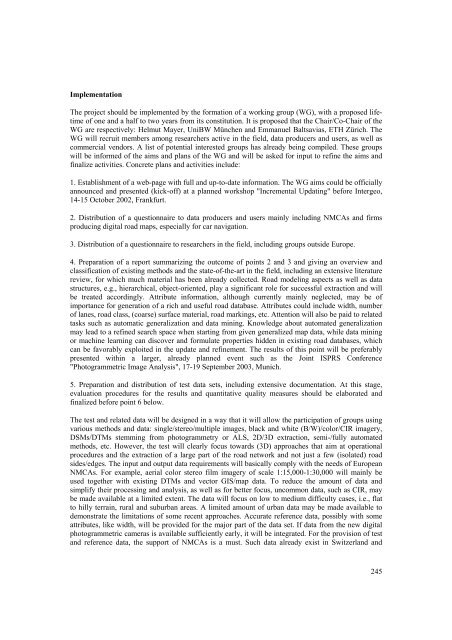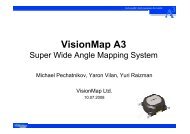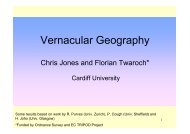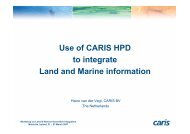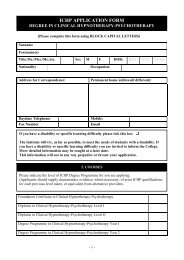EuroSDR Projects - Host Ireland
EuroSDR Projects - Host Ireland
EuroSDR Projects - Host Ireland
Create successful ePaper yourself
Turn your PDF publications into a flip-book with our unique Google optimized e-Paper software.
Implementation<br />
The project should be implemented by the formation of a working group (WG), with a proposed lifetime<br />
of one and a half to two years from its constitution. It is proposed that the Chair/Co-Chair of the<br />
WG are respectively: Helmut Mayer, UniBW München and Emmanuel Baltsavias, ETH Zürich. The<br />
WG will recruit members among researchers active in the field, data producers and users, as well as<br />
commercial vendors. A list of potential interested groups has already being compiled. These groups<br />
will be informed of the aims and plans of the WG and will be asked for input to refine the aims and<br />
finalize activities. Concrete plans and activities include:<br />
1. Establishment of a web-page with full and up-to-date information. The WG aims could be officially<br />
announced and presented (kick-off) at a planned workshop "Incremental Updating" before Intergeo,<br />
14-15 October 2002, Frankfurt.<br />
2. Distribution of a questionnaire to data producers and users mainly including NMCAs and firms<br />
producing digital road maps, especially for car navigation.<br />
3. Distribution of a questionnaire to researchers in the field, including groups outside Europe.<br />
4. Preparation of a report summarizing the outcome of points 2 and 3 and giving an overview and<br />
classification of existing methods and the state-of-the-art in the field, including an extensive literature<br />
review, for which much material has been already collected. Road modeling aspects as well as data<br />
structures, e.g., hierarchical, object-oriented, play a significant role for successful extraction and will<br />
be treated accordingly. Attribute information, although currently mainly neglected, may be of<br />
importance for generation of a rich and useful road database. Attributes could include width, number<br />
of lanes, road class, (coarse) surface material, road markings, etc. Attention will also be paid to related<br />
tasks such as automatic generalization and data mining. Knowledge about automated generalization<br />
may lead to a refined search space when starting from given generalized map data, while data mining<br />
or machine learning can discover and formulate properties hidden in existing road databases, which<br />
can be favorably exploited in the update and refinement. The results of this point will be preferably<br />
presented within a larger, already planned event such as the Joint ISPRS Conference<br />
"Photogrammetric Image Analysis", 17-19 September 2003, Munich.<br />
5. Preparation and distribution of test data sets, including extensive documentation. At this stage,<br />
evaluation procedures for the results and quantitative quality measures should be elaborated and<br />
finalized before point 6 below.<br />
The test and related data will be designed in a way that it will allow the participation of groups using<br />
various methods and data: single/stereo/multiple images, black and white (B/W)/color/CIR imagery,<br />
DSMs/DTMs stemming from photogrammetry or ALS, 2D/3D extraction, semi-/fully automated<br />
methods, etc. However, the test will clearly focus towards (3D) approaches that aim at operational<br />
procedures and the extraction of a large part of the road network and not just a few (isolated) road<br />
sides/edges. The input and output data requirements will basically comply with the needs of European<br />
NMCAs. For example, aerial color stereo film imagery of scale 1:15,000-1:30,000 will mainly be<br />
used together with existing DTMs and vector GIS/map data. To reduce the amount of data and<br />
simplify their processing and analysis, as well as for better focus, uncommon data, such as CIR, may<br />
be made available at a limited extent. The data will focus on low to medium difficulty cases, i.e., flat<br />
to hilly terrain, rural and suburban areas. A limited amount of urban data may be made available to<br />
demonstrate the limitations of some recent approaches. Accurate reference data, possibly with some<br />
attributes, like width, will be provided for the major part of the data set. If data from the new digital<br />
photogrammetric cameras is available sufficiently early, it will be integrated. For the provision of test<br />
and reference data, the support of NMCAs is a must. Such data already exist in Switzerland and<br />
245


